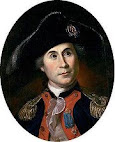________________________________________________________________________________________________________________________________________________________
Economic indicators: Serious and silly
By Minyanville
Almost every day, business headlines provide a slew of numbers that can move markets or, supposedly, help us make investment decisions.
But every measurement, including housing starts or unemployment rates, has its detractors -- analysts who argue that the methodology is dubious and the figures likely worthless. Some argue that we'd be better off paying attention to less scientific indicators, such as magazine covers or the so-called Big Mac index.
No less an authority than Alan Greenspan has noted that the sales of men's underwear can signal a change in the economy, so why aren't we all tuned in to revenue figures for the nonessential purchase?
Minyanville took a look at a range of indicators, both formal and fanciful, and asked, do they work? Here's what we learned.
The unemployment rate
What it is: The Bureau of Labor Statistics considers the unemployed to be those who are "jobless, looking for jobs and available for work."
By law, and to ensure healthy economic growth, the Federal Reserve is required to pursue a policy of "full" employment, which would mean keeping the unemployment rate at or below 4%. The current unemployment rate is hovering around 10%, a figure that typically triggers calls for emergency measures to help create jobs and shore up the economy.
Does it work? Yes, but the official unemployment, or U-3, rate leaves out a substantial number of Americans, a group of people known as marginally attached workers. These are people who are neither working nor looking for work but are available and have looked for work in the recent past. Within this group are discouraged workers -- those who have given up looking during the previous four weeks.
The U-3 rate also doesn't count the underemployed -- workers who have settled for part-time jobs, for example. Adding these categories to the U-3 rate gives the Bureau of Labor Statistics its U-6 rate, which is considered the broadest measure of unemployment and underemployment, what might be called the actual jobless rate.
The U.S. unemployment rate had been rising nearly steadily since December 2007, from 4.9% to about 10% recently. But in January, while the official figure was 9.7%, the U-6 rate was a staggering 16.5%.
Because of the gap between the U-3 and U-6 rates, David Leonhardt of The New York Times wrote in 2008, "there is no doubt that the unemployment rate is a less telling measure than it once was. It's simply no longer the best barometer of the country's economic health. A truer picture can be found elsewhere, by looking at compensation growth, for instance, or to changes in the percentage of the employed."
The hotel occupancy rate
What it is: Travel expenses, whether for business or pleasure, are some of the first to be cut when times are tough, which is one of the major reasons that investors and economists keep their eye on the hotel occupancy rate. It measures the number of rooms sold during a given time period against the number available.
Does it work? Yes and no. As a coincidence indicator, this index won't show you when a downturn is about to happen. Its recovery also lags behind that of the whole economy. But the rate is still considered useful because it comes out weekly and is a pretty good indication of where the economy is at a given time. Occupancy also can be broken out by region, so the rate can show you which areas of the country are hurting the most in a downturn.
The problem is that the true hotel occupancy rate is not always what it appears. Sometimes expansions are planned when times are flush and completed (rather than abandoned) when the economy has turned sour.
To be safe, experts recommend that investors look at RevPAR, or revenue per available room, as well as occupancy for a more accurate picture of the health of the industry. RevPAR decreased a whopping 17.3% in the first 11 months of 2009, for instance, as hotel chains lowered prices. This tops the 1.3% decline in revenue per available room that occurred from January to November 2008. Continue reading about Big Mac's and men's underwear...
I think I will stick to Big Macs and the women's skitrts. Not the most accurate but the most enjoyable
MSNBC
































0 Comments - Share Yours!:
Post a Comment